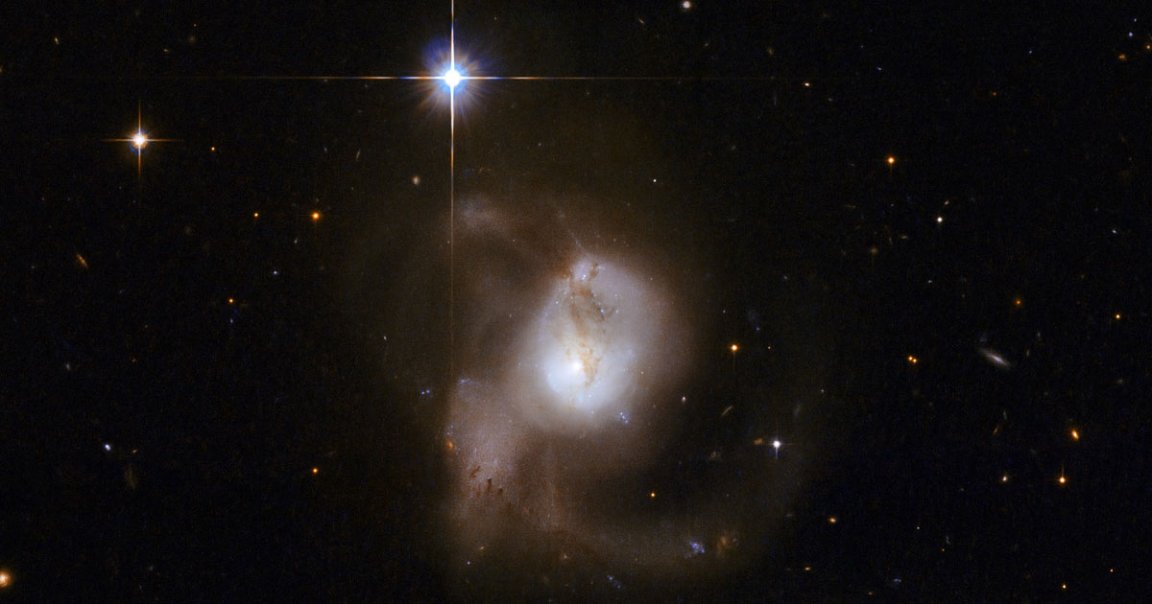
Hot Mess
NASA is throwing shade at some colliding galaxies as they merge into what’s known as “interacting galaxies,” which is astrophysics speak for when galaxies, uh, collide.
“This galaxy is kind of a hot mess,” NASA’s Hubble Space Telescope tweeted in reference to galaxy ESO 239-2, which is located a cool 550 million lightyears away from Earth.
The account noted that eventually, galaxy ESO 239-2 — likely the result of merging galaxies located in the “Grus” or Crane constellation that can sometimes be seen in North America’s southern sky — will take on an elliptical shape “like a stretched-out circle.”
Wanna Smash
Though it sounds dramatic, galactic collisions are actually pretty common. As Harvard’s Center for Astrophysics noted, researchers have “discovered that as many as 25 percent of galaxies are currently merging with others.”
As it turns out, galactic collisions are pretty important, too. In 2019, astronomers at the Rochester Institute of Technology hypothesized that the Milky Way was actually created when its proto-galaxy collided with the newly-discovered Antlia 2 galaxy, which was found to be orbiting ours. The RIT researchers argued that this collision could explain the mysterious ripples found on the Milky Way’s outer rim — and possibly help explain the existence of dark matter.
There’s a million imaginative directions we could take with something like the “hot mess” that is the ESO 239-2 galaxy. Is it home to new worlds, new particles — or just another vast expanse of the unknown?
More on galactic collisions: Astronomers: Something Is Warping Our Entire Galaxy
More Hubble: Hubble Takes Breathtaking Image of “Furnace” Galaxy